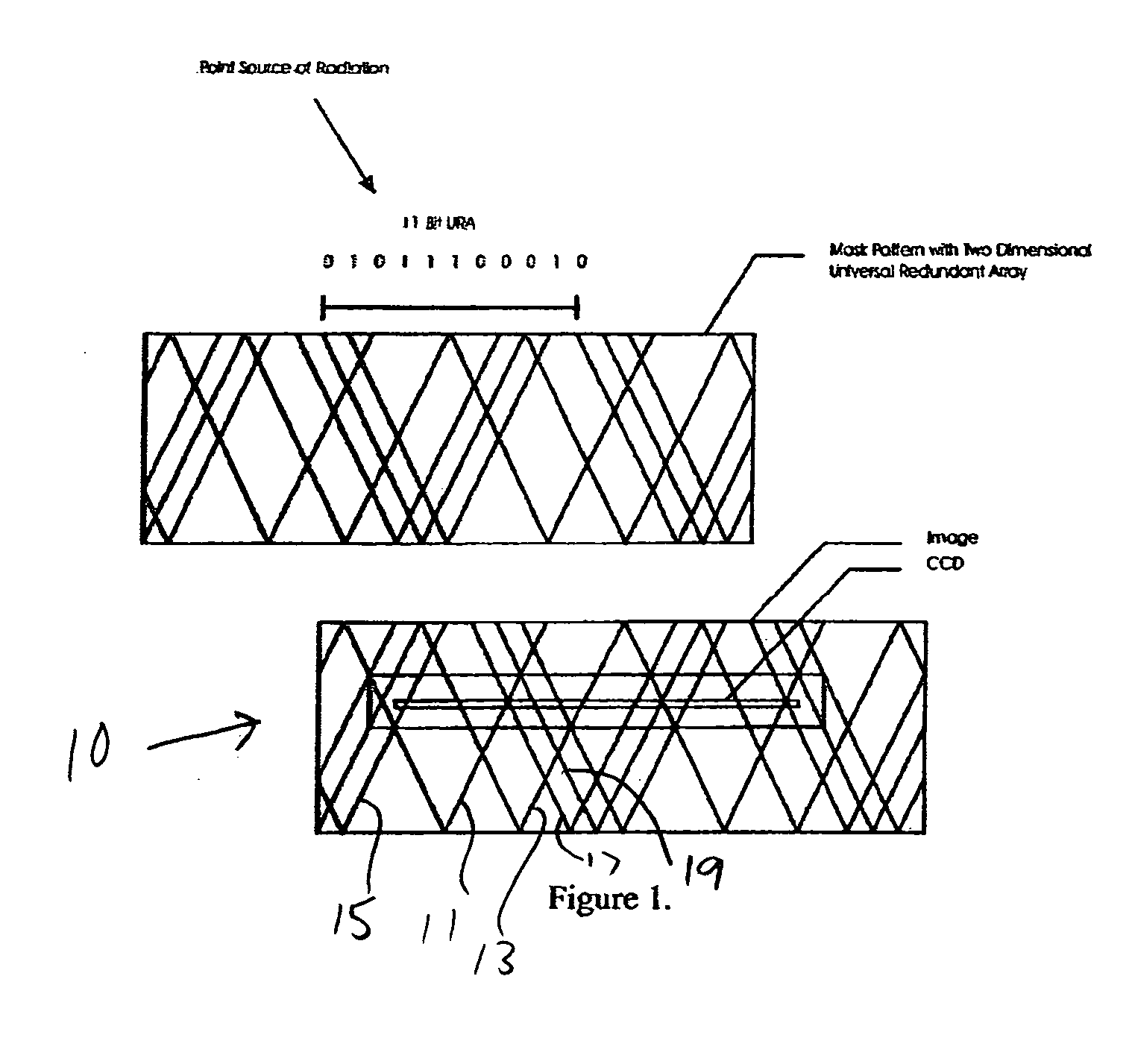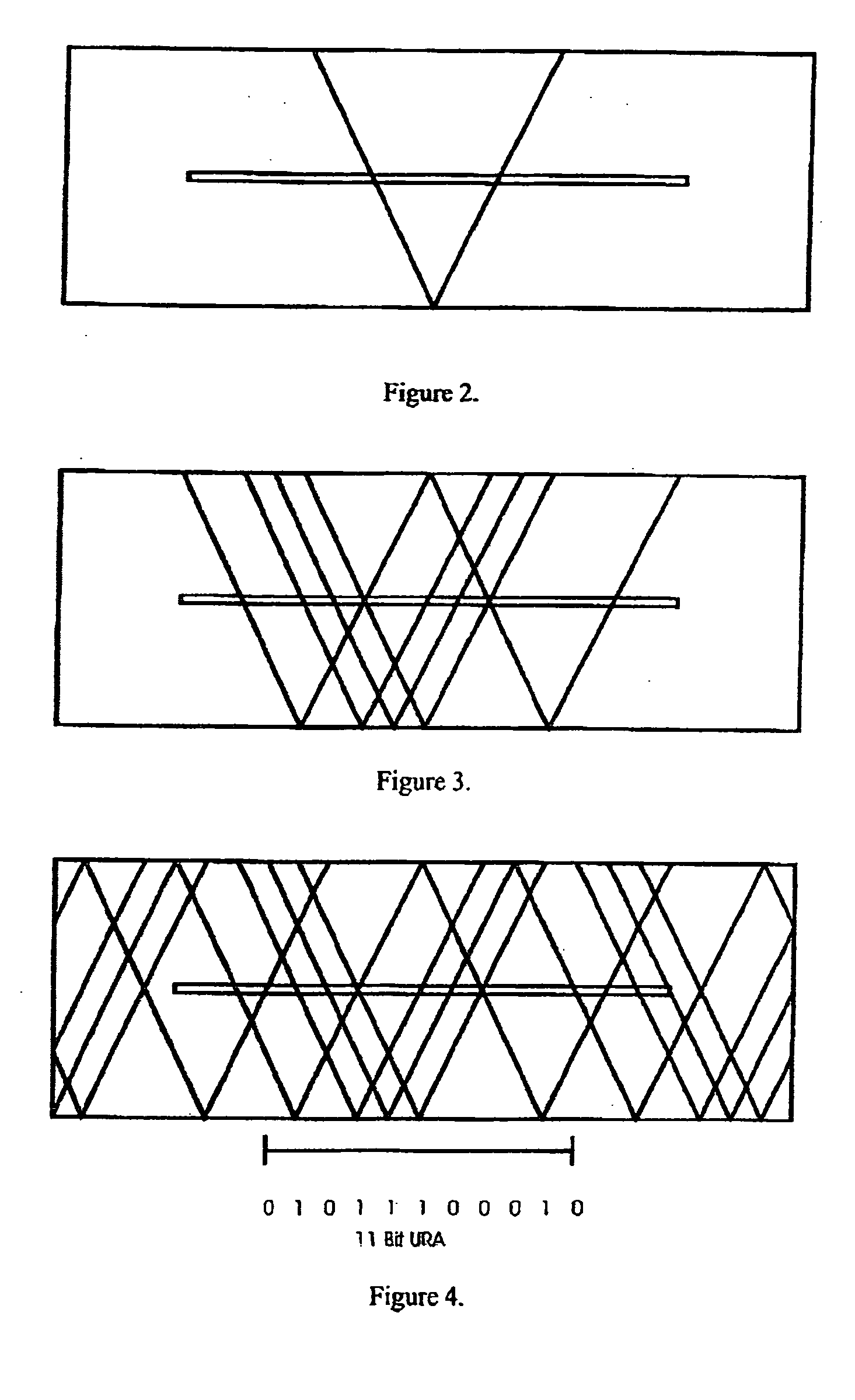Sensor for determining the angular position of a radiating point source in two dimensions
a technology of a point source and a sensor, which is applied in the direction of optical radiation measurement, instruments for comonautical navigation, instruments, etc., can solve the problems of not providing immunity from errors and not yielding sufficient resolution, and achieve the effect of accurate determination
- Summary
- Abstract
- Description
- Claims
- Application Information
AI Technical Summary
Benefits of technology
Problems solved by technology
Method used
Image
Examples
Embodiment Construction
[0028] With reference, first, to FIG. 1, a rectangular mask is generally designated by the reference numeral 10 and is seen to include a pseudo-random pattern of “V” slits 11, 13, 15, 17, 19, etc. For simplicity of description, not every “V” slit is provided with a reference numeral, however, viewing of FIG. 1 provides a full explanation of the pattern which is being described herein.
[0029] As should be understood by those of ordinary skill in the art, where each “V” slit provides 50% transmissivity, locations where adjacent “V” slits overlap form locations of 100% transmissivity. As another example, where non-overlapping portions of the pattern have 50% transmissivity and overlapping portions of the pattern have 0% transmissivity, the mask background consequently comprises a region with 100% transmissivity.
[0030]FIGS. 2-4 show a variety of “V” slit patterns, with FIG. 2 showing a single “V” slit and FIGS. 3 and 4 showing more complex combinations of “V” slits. As should be unders...
PUM
 Login to View More
Login to View More Abstract
Description
Claims
Application Information
 Login to View More
Login to View More - R&D
- Intellectual Property
- Life Sciences
- Materials
- Tech Scout
- Unparalleled Data Quality
- Higher Quality Content
- 60% Fewer Hallucinations
Browse by: Latest US Patents, China's latest patents, Technical Efficacy Thesaurus, Application Domain, Technology Topic, Popular Technical Reports.
© 2025 PatSnap. All rights reserved.Legal|Privacy policy|Modern Slavery Act Transparency Statement|Sitemap|About US| Contact US: help@patsnap.com



